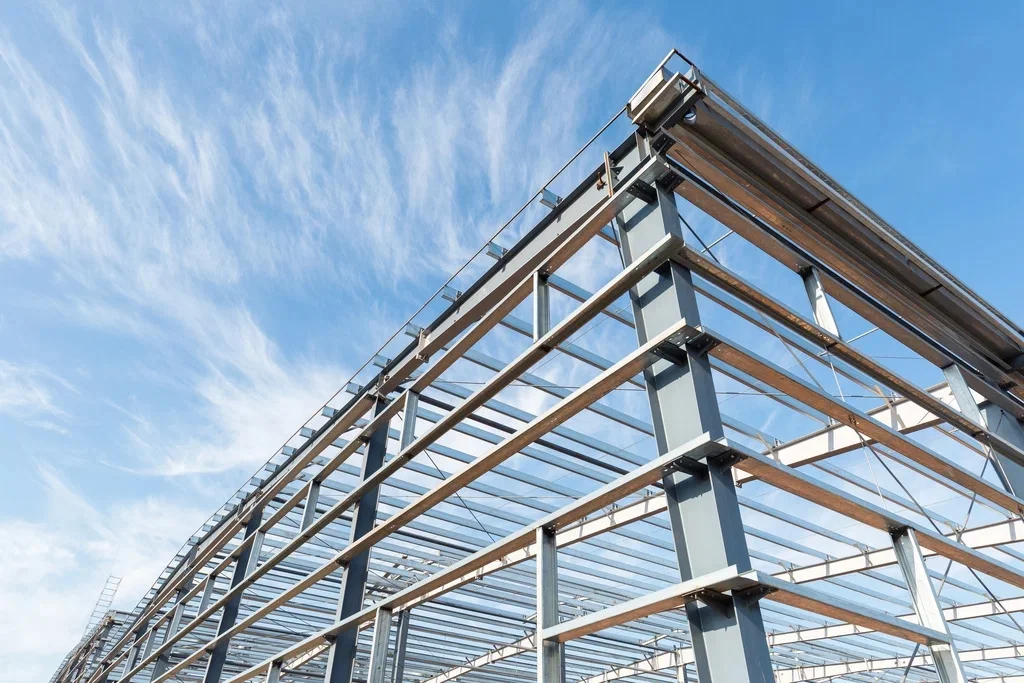In recent decades, the modern construction industry has changed rapidly with efficiency, sustainability, and safety becoming the main goals for engineers and developers alike. Steel, among the other materials that are impacting this evolution, remains one of the most flexible and dependable. Steel structure fabrication has certainly revolutionized building design and building in a variety of different applications including buildings, bridges, factories, and commercial complexes.
Industrial steel structures now represent strength, flexibility, and durability, from office towers to stadiums to large warehouses. With the advancement of design methods and precision engineering, the modern steel frame is the foundation for many projects around the world.
Why Steel Structures Are the Backbone of Modern Engineering
The widespread acceptance of steel structure building is due to its combination of strength and flexibility. Steel is remarkably lightweight compared to concrete, yet has a much larger capacity for tension and compression, making it an extraordinarily good option for projects that require long spans, open spaces, and short construction times.
Industrial steel structures are a popular choice in commercial and industrial construction applications, for their capacity to carry large loads and resist environmental forces. Whether the user needs a manufacturing facility, a logistics storage facility, or an office or airport building, steel provides the level of stability and certainity needed for such buildings.
One major benefit of choosing a steel framework is the design flexibility offered for the building. Architects and engineers can fabricate steel into virtually any shape desired without sacrificing strength. For example, unlike a concrete frame, it is possible to construct a curved roof with steel; a cantelivered bridge; or a multi-storied plaza without sacrificing structural performance and safety standards.
The Process of Steel Structure Fabrication
Design and Planning
The steel structure fabrication process begins with thorough planning and computer-aided design (CAD). Engineers will assess load-bearing requirements, environmental demands, and architectural details to formulate accurate blueprints. This decision will also determine how each piece in the finished steel framework will be cut, welded, and assembled.
Cutting and Shaping
After the design has been approved, fabrication can begin in a workshop. Machines such as CNC plasma cutters, drills, and hydraulic presses will shape raw steel into the required beams, columns, and panels. At this stage, precision is critical as all components must fit like a jigsaw puzzle when assembled on site.
Welding and Assembly
In the next stage, specialist welders and fitters will join the components. All connections will be strength tested. Reliability of the welding and bolting will be checked. During the fabrication process, proper alignment and fitting is essential to final fitting and stability of the steel framework once construction work is started, particularly in high-rise or heavy-load structures.
Surface Treatment and Quality Control
Because of the nature of steel, it is typically treated with coatings or treated to protect the steel structure from corrosion and increase lifespan. Each piece fabricated will be undergone quality control inspections to ensure compliance with engineering and safety standards, before delivery to site.
Benefits of Using Industrial Steel Structures
The rise of industrial steel structures in the construction industry is not without reason. These systems offer a range of practical and economic advantages, making them the preferred choice for developers and engineers alike.
-
Durability and Longevity: Steel is resistant to pests, moisture, and fire, making it highly durable and suitable for various climates.
-
Cost Efficiency: Prefabrication and faster assembly reduce labour costs and project timelines.
-
Sustainability: Steel is 100% recyclable, aligning with modern sustainability goals and green building standards.
-
Ease of Modification: A steel framework allows for easy expansion or modification of existing structures without major disruptions.
-
Design Flexibility: Architects can achieve complex shapes and open interiors without excessive support columns.
These benefits make industrial steel structures ideal for factories, commercial plazas, and large-scale warehouses where strength, scalability, and quick construction are vital.
Steel Framework in Modern Architecture
Steel framework is not limited to industrial usage. Nowadays, steel is also used in residential and public infrastructure, in consideration of its architectural functionality and versatility. High-rise residential developments, sports facilities and public transits rely on the preferred design that steel offers.
In addition, steel structures can lead more fabrication processes to the construction site and make every component more consistent and accurate, thereby reducing time spent trying to assemble on site. This means quicker timelines for each project with consideration for time and acting quickly for urban disruption.
Safety and Sustainability in Steel Construction
Safety continues to be a leading consideration in today's construction environment, and industrial steel structures are meticulously designed in accordance to the most stringent building codes and standards. Steel is noncombustible, significantly reducing the risk of fire, and one of the best attributes is its consistently sound structure that can withstand natural forces like earthquakes and high winds.
From a sustainability standpoint, steel is one of the most sustainable possible materials. Since steel is recyclable, a steel frame can be re-used or reconstituted with a fraction of the waste generated by other materials which is essential for companies hoping to meet their environmental and corporate responsibilities and goals.
Conclusion
Building dependable industrial steel structures calls for technical expertise, precision engineering, and a commitment to quality. From concept to final installation, every facet of steel structure fabrication requires due diligence and precision to safety standards. Collaborating with experienced professionals alleviates apprehension that every component of your steel framework works efficiently, safely, and sustainably.
At BrighttechEngineering our expertise is world-class Steel Structure Fabrication, from concept to completion. Our team combined years of experience and the latest technology to offer dependable, cost-effective results to the commercial, residential, and industrial sectors.
With a mindful spirit of innovation and precision, BrighttechEngineering is proud to be a trusted partner in designing and constructing industrial steel structures that stand the test of time—high-rise towers, complex steel framework systems, and beyond; we deliver strength, efficiency, and excellence: shaping the future of modern construction projects at a time.






